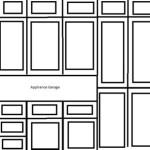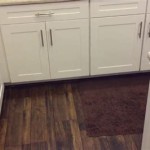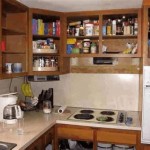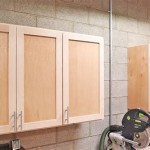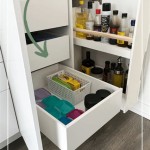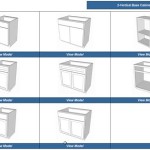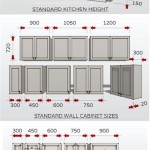Kitchen Cabinet Plate Rack: Organization and Design Considerations
The kitchen, often considered the heart of the home, demands efficient organization to facilitate smooth meal preparation and maintain a visually appealing environment. Within the realm of kitchen organization, the plate rack within kitchen cabinets stands out as a functional and aesthetically pleasing solution for storing and displaying dishware. This article explores the various aspects of kitchen cabinet plate racks, encompassing their benefits, design considerations, installation methods, and the materials used in their construction. Understanding these elements contributes to informed decisions when incorporating plate racks into kitchen design or renovation projects.
A plate rack is essentially a structure designed to hold plates, platters, and other dishware in an upright or slightly angled position. They are typically found inside kitchen cabinets, optimizing vertical space and preventing stacking, which can lead to chipping and breakage. The design of a plate rack can vary significantly, ranging from simple wire structures to more elaborate wooden designs with decorative elements. The choice of design often depends on the overall style of the kitchen and the specific storage needs of the homeowner.
Benefits of Using a Kitchen Cabinet Plate Rack
Employing a plate rack within kitchen cabinetry offers numerous practical advantages. Foremost is the enhancement of kitchen organization. By keeping plates neatly arranged and easily accessible, plate racks minimize clutter and streamline the process of setting the table or unloading the dishwasher. This contributes to a more efficient and pleasant kitchen environment.
Secondly, plate racks help to protect dishware. By preventing stacking, they reduce the risk of scratches, chips, and breakage. This is particularly important for delicate or valuable china. The upright or angled positioning of plates allows for airflow, preventing moisture buildup and promoting hygiene.
Beyond functionality, plate racks contribute to the aesthetic appeal of the kitchen. Whether concealed within cabinets or displayed on open shelving, they can add a touch of elegance and visual interest. The choice of material and design can complement the overall style of the kitchen, enhancing its overall aesthetic.
Space optimization is another key benefit. Plate racks effectively utilize vertical space within cabinets, allowing for more efficient storage of dishware. This is particularly valuable in kitchens with limited cabinet space. By maximizing storage capacity, plate racks can help to declutter countertops and create a more spacious and organized kitchen.
Finally, accessibility is improved. Instead of digging through stacks of plates, users can easily select the desired plate from the rack, improving daily efficiency. This is particularly helpful for individuals with mobility issues or those who frequently use specific plates.
Design and Material Considerations for Kitchen Cabinet Plate Racks
The design of a kitchen cabinet plate rack should be carefully considered to ensure both functionality and aesthetic appeal. Factors such as the size and shape of the plates to be stored, the available cabinet space, and the desired style of the kitchen should all be taken into account.
The size of the rack should be appropriate for the plates being stored. A rack that is too small will not accommodate larger plates, while a rack that is too large will waste valuable space. The depth of the rack should also be considered, ensuring that it does not protrude excessively into the cabinet and impede access to other items.
The material used in the construction of the plate rack plays a significant role in its durability and aesthetic appeal. Common materials include wood, wire, and metal. Wooden plate racks offer a classic and elegant look, and can be customized to match the existing cabinetry. Wire plate racks are typically more affordable and offer good visibility of the stored plates. Metal plate racks are durable and easy to clean, and can be a good choice for modern kitchens.
Wood options often involve hardwoods like maple, cherry, or oak, which provide strength and visual appeal. The wood can be stained or painted to match the surrounding cabinetry. Wire racks are generally coated with plastic or vinyl to prevent rust and scratching. Metal racks may be stainless steel, chrome, or powder-coated for durability and aesthetics.
The style of the plate rack should complement the overall aesthetic of the kitchen. A traditional kitchen might benefit from a wooden plate rack with decorative details, while a modern kitchen might be better suited to a sleek and minimalist metal plate rack. The color and finish of the rack should also be considered, ensuring that it blends seamlessly with the surrounding cabinetry and décor.
Furthermore, the configuration of the rack itself should be considered. Some racks offer multiple tiers for different plate sizes, while others feature adjustable dividers to accommodate varying thicknesses. The spacing between the slots should be sufficient to allow for easy access to the plates without overcrowding.
Installation and Maintenance of Kitchen Cabinet Plate Racks
The installation of a kitchen cabinet plate rack is a relatively straightforward process that can typically be completed by a homeowner with basic carpentry skills. However, if the rack is being installed as part of a larger kitchen renovation project, it may be best to hire a professional installer.
Before beginning the installation, it is important to carefully measure the available space within the cabinet and ensure that the plate rack will fit properly. The rack should be positioned in a location that is easily accessible and does not interfere with the operation of other cabinet components, such as drawers or shelves.
The method of installation will vary depending on the type of plate rack and the construction of the cabinet. Some plate racks are designed to be mounted directly to the cabinet walls using screws, while others are designed to be suspended from the cabinet ceiling using brackets. It is important to follow the manufacturer's instructions carefully to ensure that the rack is installed securely and properly.
Once the rack is installed, it is important to ensure that it is level and stable. This can be accomplished by using shims or adjustable feet. The rack should also be inspected regularly for any signs of damage or wear. Any loose screws or damaged components should be repaired or replaced promptly.
Maintaining a kitchen cabinet plate rack is relatively simple. Regular cleaning with a damp cloth is typically sufficient to remove any dust or grime. For wooden plate racks, it may be necessary to occasionally polish the surface to maintain its shine. If the rack is made of metal, it is important to dry it thoroughly after cleaning to prevent rust.
Beyond cleaning, it is also important to avoid overloading the plate rack with too many dishes. Overloading can strain the rack's supports and potentially cause it to collapse. Plates should be placed securely within the rack, ensuring that they are not at risk of falling or sliding. Sharp objects should be positioned carefully to avoid scratching or damaging the rack's surface.
In cases where the plate rack is integrated within a custom cabinetry setup, the initial design phase should include considerations for weight distribution and support. Reinforcements may be necessary to ensure the long-term stability of the structure. It is always recommended to consult with a professional cabinet maker or designer to optimize the design and installation process.
Furthermore, the choice of cleaning products should be carefully considered, especially for wooden plate racks. Harsh chemicals can damage the finish and dull the wood's natural luster. Mild soap and water are generally sufficient for routine cleaning. For more stubborn stains, a specialized wood cleaner may be necessary, but it should always be tested on an inconspicuous area first.
By carefully considering the design, materials, installation, and maintenance of kitchen cabinet plate racks, homeowners can effectively organize their dishware, protect valuable items, and enhance the overall aesthetic of their kitchen.

Diy Inside Cabinet Plate Rack Remodelando La Casa

Solid Wood Oak Plate Rack Kitchen Racks Cabinets

13 Ways To Add A Plate Rack Your Kitchen

Kitchen Cabinet Accessories Stainless Steel Built In Dish Tray Plates Drying Storage Rack China And Drip Made Com

Add Plate Racks To Your Kitchen Cabinets Premium

Bringing Back A Classic 25 Trendy Ways To Add Plate Rack Decoist

A Spring Inspired Kitchen Country Designs Plate Racks In Diy Storage

Diy Inside Cabinet Plate Rack Remodelando La Casa

Remodelaholic Upgrade Cabinets By Building A Custom Plate Rack Shelf Builder Grade Kitchen Home Kitchens Shelves

Stainless Steel 304 Kitchen Cabinet Mounted Dish Rack 5 Sizes 560 Mm 660 760 860 960 Singapore Home Diy Hardware Tools My Beaver
Related Posts

